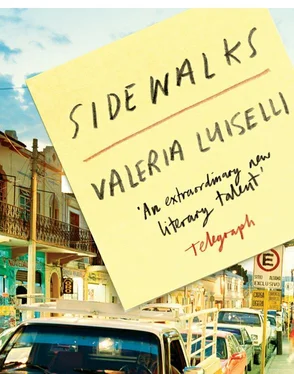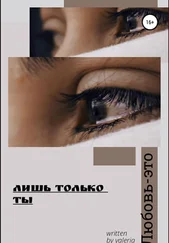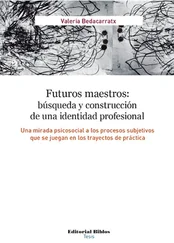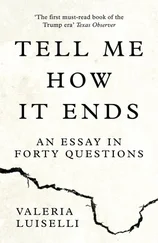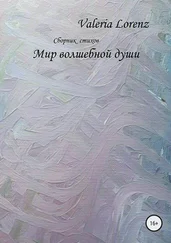As far as I could tell, the ex-library was being used as an improvised and not quite official workshop for restoring murals. Six or seven long tables ran the length of the first floor, and on them lay the panels of a mural from the 1930s, painted by Ramón Alva de Canal and called The History of Writing .
A small, suspicious, mousy man — the “Workshop Director,” according to the nametag pinned to his shirt — came up to chase me away as soon as he saw me cross through the arched entrance accompanied by one of the two guards. But the squat angel in blue, now on my side, immediately vouched for my good intentions: The señorita says she’s come to see you, chief.
Each section of the mural recorded a different moment in the graphological history of mankind, beginning with a simple image of the first tremulous strokes on the wall of some cave, and ending with a sort of strident hymn to the great industry of the modern press. It seemed a little ironic that this very mural, The History of Writing , was being restored in an ex-library completely devoid of books. The image of the empty, dilapidated library housing this mural, itself in a ruinous state, should have perhaps made up the seventh, nonexistent panel to complete the series:
1. Cave painting
2. Cuneiform writing
3. Papyri and hieroglyphs
4. The alphabet
5. Johannes Gutenberg
6. Modern printing
7. The fall of libraries and bookshops
No parking
In the middle of a sentence, after the umpteenth comma deleted and undeleted, I suddenly lose the will to continue writing. I get up from the desk, impatient and defeated, and go to the bookcase. With the persistence of a mosquito around a lightbulb, I prowl the shelves in search of that book, that page, that underlined phrase I vaguely remember, but which — if I could only reread it — would finally give me the confidence to complete my recently abandoned idea. But I find nothing and sit back down at my writing desk.
I know that the times I feel most excited about what I’m writing are when I should be most suspicious, because more often than not I’m repeating something I either said or read elsewhere, something that has been lingering in my mind for a while. I’m almost always saying something trivial just when I believe I’m on the verge of a novel idea. In contrast, the worst moment to stop writing is when I no longer feel like going on. On those occasions, it’s always better to keep rapping thoughts into the keyboard, like drilling holes in the ground, until the exact word emerges. Only then, take the book off the shelf and drop into an armchair to read. In some way, I guess, writing is making space for reading.
We buy old books
Cities have often been compared to language: you can read a city, it’s said, as you read a book. But the metaphor can be inverted. The journeys we make during the reading of a book trace out, in some way, the private spaces we inhabit. There are texts that will always be our dead-end streets; fragments that will be bridges; words that will be like the scaffolding that protects fragile constructions. T. S. Eliot: a plant growing in the debris of a ruined building; Salvador Novo: a tree-lined street transformed into an expressway; Tomás Segovia: a boulevard, a breath of air; Roberto Bolaño: a rooftop terrace; Isabel Allende: a (magically real) shopping mall; Gilles Deleuze: a summit; and Jacques Derrida: a pothole. Robert Walser: a chink in the wall, for looking through to the other side; Charles Baudelaire: a waiting room; Hannah Arendt: a tower, an Archimedean point; Martin Heidegger: a cul-de-sac; Walter Benjamin: a one-way street walked down against the flow.
And everything we haven’t read: relingos, absences in the heart of the city.
Guaranteed repairs
Restoration: plastering over the cracks left on any surface by the erosion of time.
Writing: an inverse process of restoration. A restorer fills the holes in a surface on which a more or less finished image already exists; a writer starts from the fissures and the holes. In this sense, an architect and a writer are alike. Writing: filling in relingos.
No, writing isn’t filling gaps — nor is it constructing a house, a building, just to fill up an empty space.
Perhaps Alejandro Zambra’s bonsai image might come closer: “A writer is a person who rubs out. . Cutting, lopping: finding a form that was already there.”
But words are not plants and, in any case, gardens are for the poets with orderly, landscaped hearts. Prose is for those with a builder’s spirit.
Writing: drilling walls, breaking windows, blowing up buildings. Deep excavations to find — to find what? To find nothing.
A writer is a person who distributes silences and empty spaces.
Writing: making relingos.
Raw materials
I’ve spent weeks putting off the inevitable ordering of my bookshelves. I sit on the only chair in the apartment, my feet resting on a box labeled “Kitchem things” and stare at the empty shelves.
Leases
I know people who have made an art of the extremely tedious task of viewing apartments; people who pass through a city visiting houses or rooms to let, unfurnished and rather dingy, only to go back to their own accommodation — perfectly habitable, and surely prettier — and imagine where they would put the piano, the writing desk, the bookcase in that other empty place. “Things, things, things,” complained the poet Robert Creeley, “and nowhere to go.”
Empty places have a fascination that at once stimulates and disconcerts us. The gaze — which is nothing more than an extension, a hand, of the mind — takes pleasure in and entertains itself filling up hollow spaces. Maybe this intolerance of absence is merely a malformation of the human mind. Pretentious Heideggerians might say it’s just an ontic expression of a more deep-seated ontological condition, impossible to change: horror vacui expressed as the ocular amusement and mental pastime of filling spaces. Whatever the truth, I can’t claim to be free of guilt. Although I hate moves, and empty apartments depress me, I’ve also found solace in furnishing certain spaces in my imagination.
Change of address
My face is different since I moved into this apartment. Something happened to it during the move. As if I’d lost the contour of my forehead amid the boxes; as if with so much dust, the curve of my chin had blurred. I study myself in the bathroom mirror while I brush my teeth and try to connect my nose to my brow, the right eye to the irremediable shadow beneath it, always darker than on the left: I have a face full of gaps.
A coffee, a newspaper on the table: I browse yesterday’s news — skip the politics — go to the culture pages. Between a succinct article on Lichtenberg’s aphorisms and an interview with Umberto Eco, I find the last portrait taken of Marguerite Duras. Today I look like that final portrait: a crumpled piece of paper.
I cut out the photo with the kitchen scissors and put it between the pages of a notebook; maybe it will come in useful some time, though I’ll most likely forget about it. The problem for people like me who collect scraps of paper with no method or ultimate objective is that our boxes and notebooks come to look ever more like us: a disorganized collage and never a coherent catalog of marvels. If I find the photo of Duras again some day while rummaging in a notebook or a box, it will be by pure chance. And I don’t know what that gaze, that hand holding a fountain pen as if it were her last grip on the world, would say to me.
Open all hours
I look for Marguerite Duras’s Écrire in the boxes of books; I know it’s going to be difficult to find, but yet again I’m not going to organize my bookshelves. What I need — and haven’t found — is a system: Does Borges go after Arlt, Poe, Stevenson, or the Thousand and One Nights ? Do Shakespeare and Dante belong on the same shelf? It’s difficult to know how much influence the title of a book has on the one next to it. Maybe books prefer disorder to the “mild boredom of order” that Walter Benjamin described while unpacking his library. In any case, accidental order can produce the best finds. There’s a well-known anecdote: metaphysics was the accidental invention of a librarian who, on receiving Aristotle’s masterwork, didn’t know where to shelve it. Having deliberated for some time, he placed the newly arrived volumes after the philosopher’s Physics . To remind himself where they were, he noted in his catalog: “tá méta tá fisica” (literally: “that which comes after physics”). By that same logic, which books would comprise the meta-Shakespearean category?
Читать дальше
